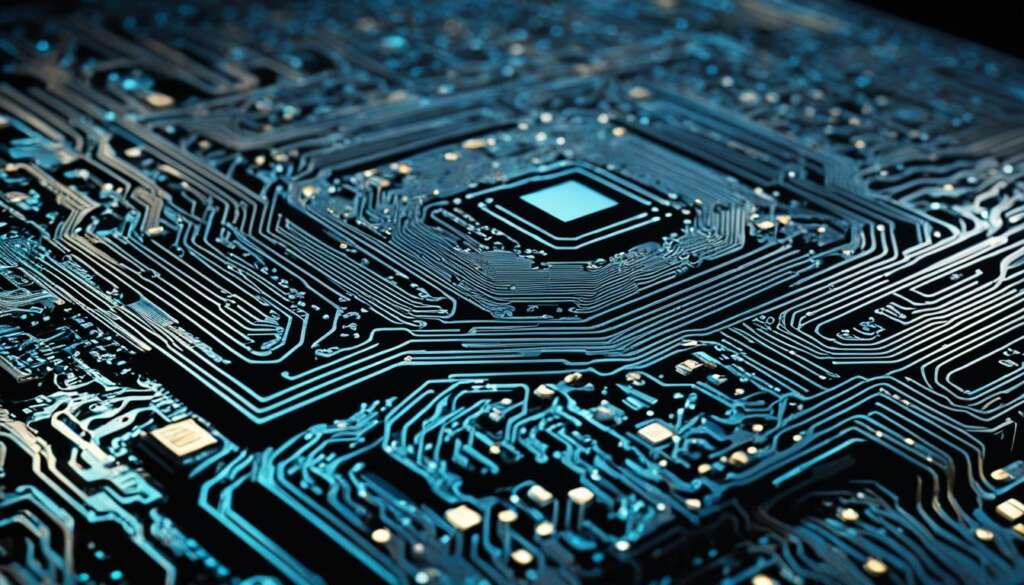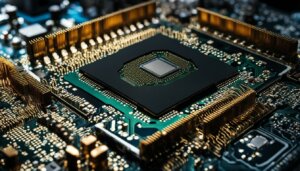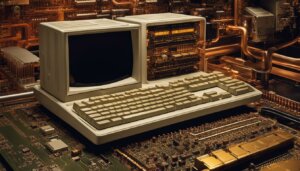Table of Contents
Read-Only Memory (ROM) is a type of non-volatile memory used to store important information in computing devices. It retains its content even when the power is turned off and is an essential component in the functioning of electronic devices. ROM is a type of integrated circuit that acts as a storage medium and is used in personal computers and other electronic devices. It is called Read-Only Memory because the data stored on it cannot be modified or altered.
ROM plays a crucial role in the start-up process of a computer and contains the firmware and system instructions necessary for the device to operate properly. There are different types of ROM, including MROM, PROM, EPROM, and EEPROM, each with its own characteristics and uses.
ROM is advantageous because it is cheaper and more reliable than RAM, and its circuit is simple and does not require refreshing time. However, a disadvantage of ROM is that its data cannot be modified, and it is slower than RAM.
What is Read-Only Memory (ROM)?
Read-Only Memory (ROM) is a type of non-volatile memory used in computers and electronic devices. It is called Read-Only Memory because the data stored on it cannot be modified or changed. ROM serves as a permanent memory unit, storing crucial information necessary for the operation of the system.
The information stored in ROM is in binary format, utilizing the “0” and “1” digits to represent data. It is designed to be read-only, meaning it can only be accessed and retrieved, but not modified. This makes ROM an ideal storage medium for firmware, system instructions, and other critical data that remain constant throughout the device’s usage.
ROM is composed of electronic fuses known as “memory cells.” These cells are programmed during the manufacturing process with specific data relevant to the device’s functionality. The programmed data remains intact, even when the power is turned off, making ROM a reliable and permanent source of information.
“ROM is like a vault of knowledge for a computer. It holds vital instructions and data that enable the system to function and perform tasks effectively. Just like a lock that cannot be changed, the data stored in ROM remains unalterable, ensuring the stability and reliability of the computer’s operations.” – Computer Scientist
ROM plays a pivotal role in the start-up process of a computer. It is involved in executing firmware and system instructions necessary for the device to operate correctly. When a computer is powered on, the ROM is accessed, and the stored information is utilized to initialize various components and establish the foundation for the system’s operation.
While ROM offers the advantage of permanent storage and reliability, it has limitations. As compared to Random Access Memory (RAM), ROM is slower in terms of read and write operations. Additionally, the inability to modify the data stored in ROM restricts its versatility, making it unsuitable for storing dynamic data or user-generated content.
Overall, ROM serves as a crucial component in the functioning of computers and electronic devices. Its permanent, non-volatile nature makes it an essential memory format for storing critical instructions and data necessary for the device’s operation, ensuring stability and reliability.
Types and Features of Read-Only Memory (ROM)
Read-Only Memory (ROM) comes in various forms, each offering unique features and applications. One such type is Masked Read-Only Memory (MROM), which is the oldest ROM variant. MROM consists of a grid of word lines and bit lines interconnected by transistor switches, making it a reliable storage medium for fixed data.
Another type is Programmable Read-Only Memory (PROM), which is a blank memory that can be programmed post-manufacturing using a dedicated PROM program. Once the data is programmed onto PROM, it becomes non-volatile and cannot be altered or erased.
Erasable Programmable Read-Only Memory (EPROM) is a type of PROM that offers the advantage of reprogrammability. The stored data in EPROM can be erased and rewritten using ultraviolet light, making it a flexible option for certain applications.
Electrically Erasable Programmable Read-Only Memory (EEPROM) is yet another variant that allows for electrically erasing and rewriting data. This makes EEPROM suitable for applications that require frequent updates or modifications without the need for additional equipment.
ROM serves a range of purposes across multiple domains, including firmware, microcontrollers, and remote keyless systems. Its cost-effectiveness, reliability, and ease of testing make it an advantageous choice. However, it is important to note that ROM operates at a slower speed than Random-Access Memory (RAM) and cannot be modified once programmed.
FAQ
What is Read-Only Memory (ROM)?
ROM is a type of non-volatile memory used in computers and electronic devices. It is called Read-Only Memory because the data stored on it cannot be modified or changed. ROM is a permanent memory unit and is used to store important information that is used to operate the system. The information stored in ROM is in binary format and is read-only, meaning it can only be read and not modified. ROM contains electronic fuses that are programmed with specific information during the manufacturing process. The information stored in ROM remains intact even when the power is turned off, making it a reliable source of data for the system.
What are the types of Read-Only Memory (ROM)?
There are different types of ROM, including MROM, PROM, EPROM, and EEPROM. Each type has its own features and uses. MROM, or Masked Read-Only Memory, is the oldest form of ROM that consists of a grid of word lines and bit lines joined together by transistor switches. PROM, or Programmable Read-Only Memory, is a blank memory that can be programmed after manufacturing using a PROM program. Once programmed, the data on PROM cannot be changed or erased. EPROM, or Erasable Programmable Read-Only Memory, is a type of PROM that can be reprogrammed. The data stored in EPROM can be erased and reprogrammed using ultraviolet light. EEPROM, or Electrically Erasable Programmable Read-Only Memory, can be programmed and erased electrically. Each type of ROM has its own advantages and applications in electronics and computing.
What are the advantages of ROM?
ROM offers several advantages in comparison to other types of memory. It is cheaper than RAM and more reliable because it retains its data even when the power is turned off. ROM is also easy to test, making it a preferred choice for critical system instructions and firmware. Additionally, the circuit of ROM is simple and does not require refreshing time like RAM does.
What are the disadvantages of ROM?
While ROM has its advantages, it also has some drawbacks. One major disadvantage is that the data stored on ROM cannot be modified or altered once it is programmed. This lack of flexibility means that any changes or updates to the data require replacing the entire ROM chip. Another disadvantage is that ROM is slower than RAM, which can affect the overall performance of a computer or electronic device.
Where is ROM used?
ROM is used in various applications, including firmware, microcontrollers, and remote keyless systems. The permanent nature of the data stored in ROM makes it ideal for storing system instructions, boot-up code, and configuration settings that are essential for the proper functioning of electronic devices. ROM is also commonly used in embedded systems, where its reliability and non-volatile nature play a crucial role.








